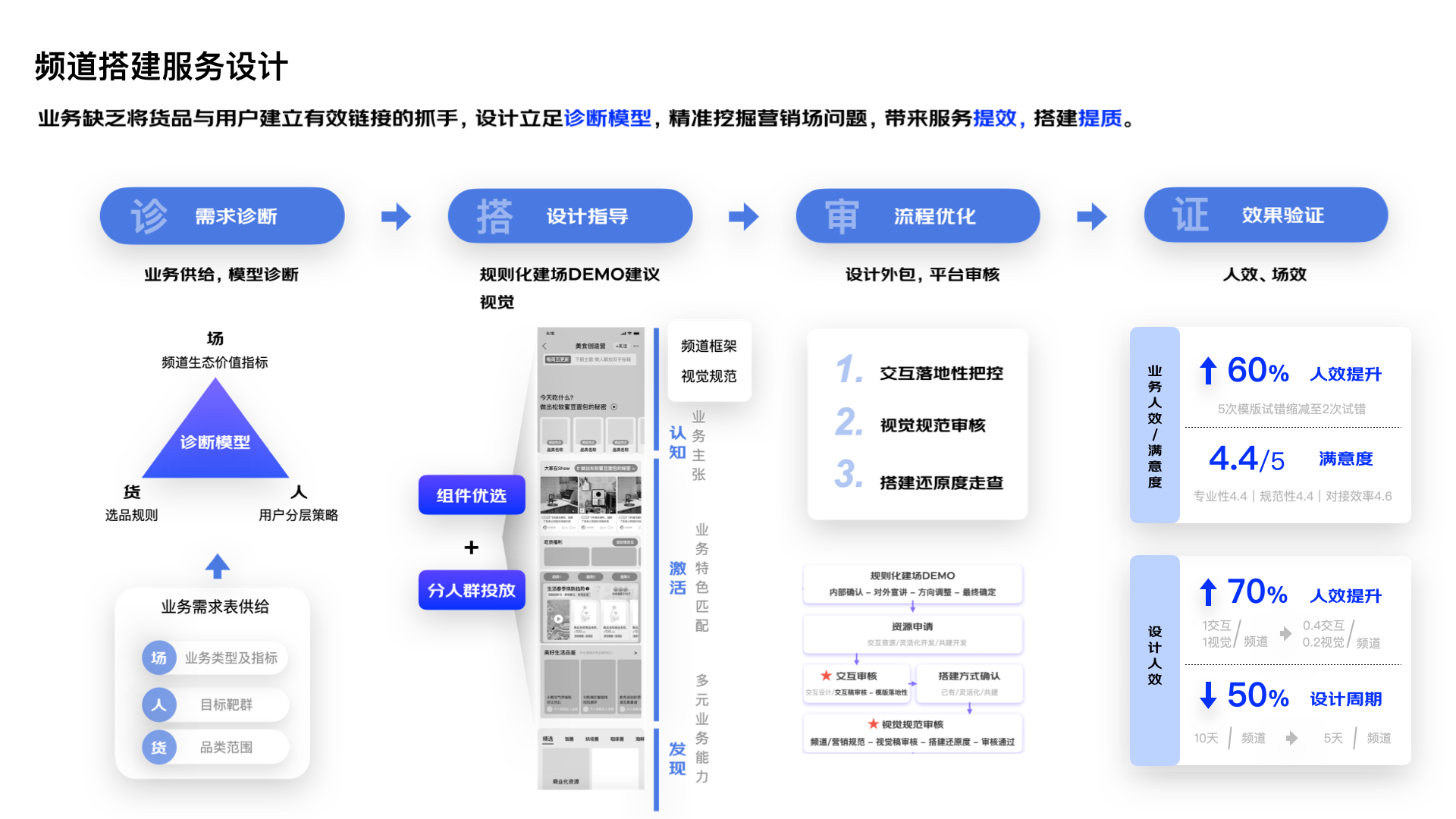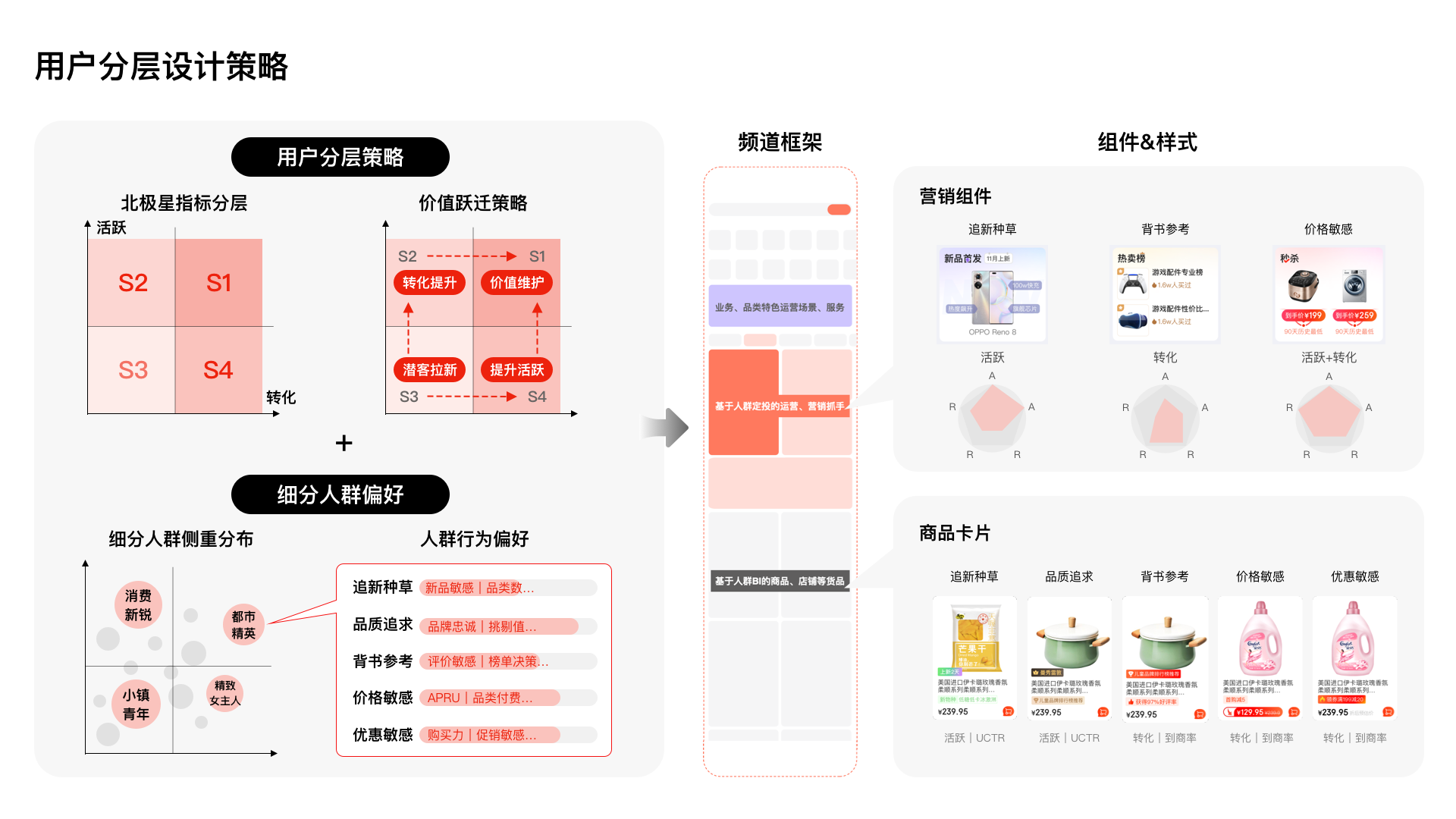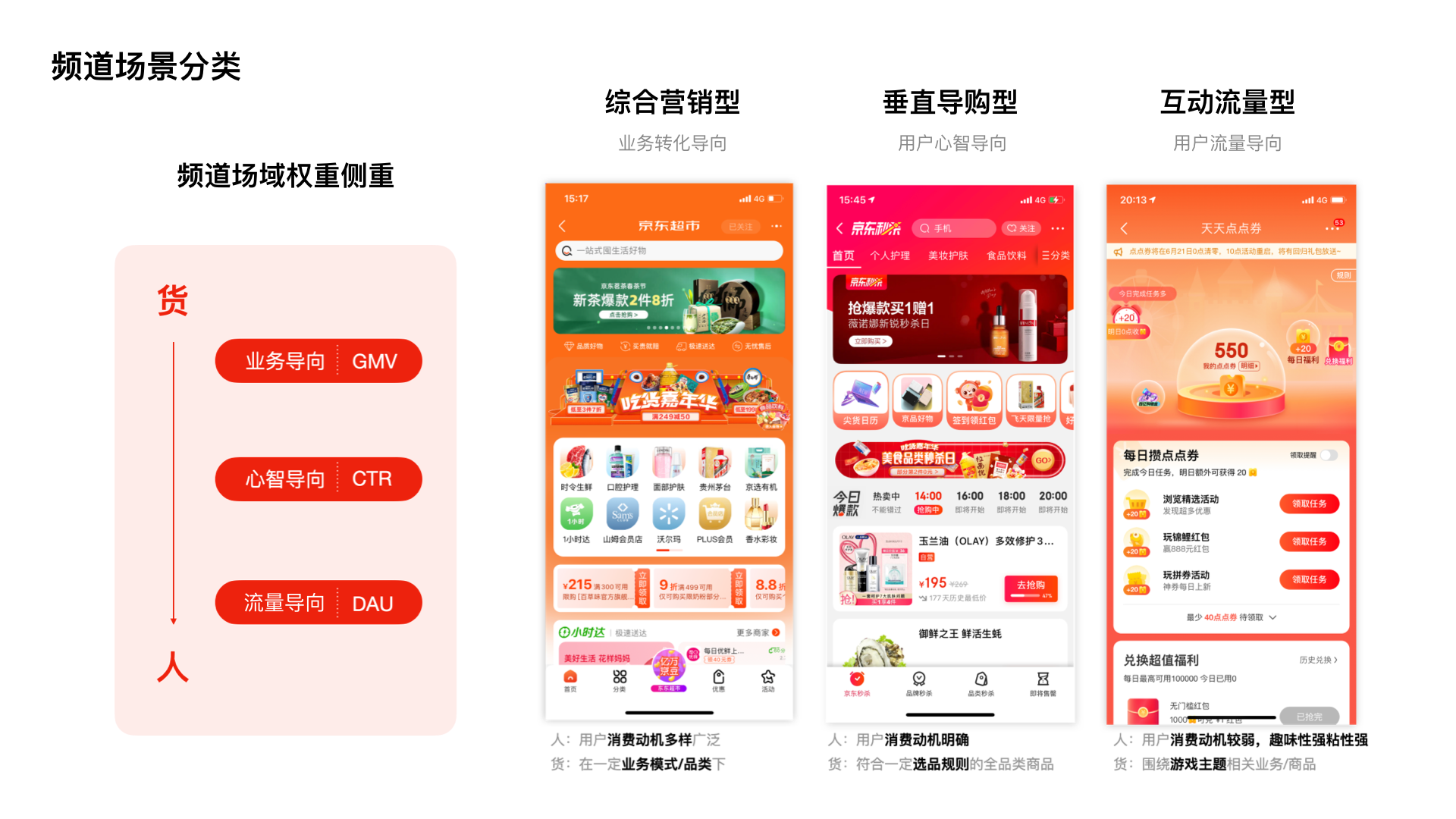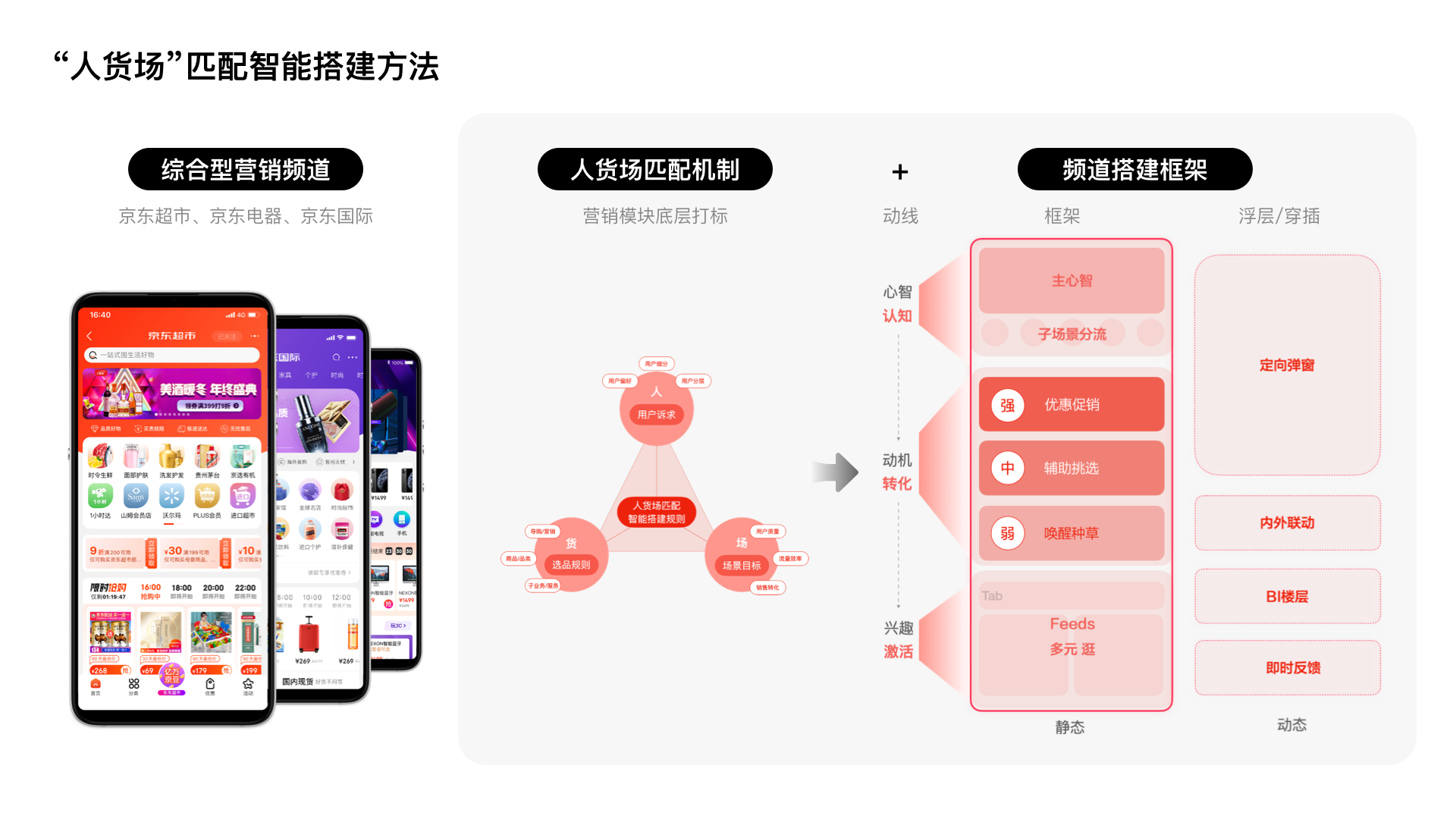-
 Ding Jiachun
JD
UX Designer
Ding Jiachun
JD
UX Designer
She has been with JD.com for over 8 years and is mainly responsible for and involved in various core marketing channels (new products, flash sales, flash purchases, etc.), the construction of the Thousand People and Thousand Faces channel, and the construction of JD.com channel ecology and related backend capabilities. She focuses on user experience and feelings, excels at combining business operation models and problems, exploring demand gaps from the user's perspective, and gaining insight into marketing growth opportunities. She excels in user segmentation, user profiling, user operation, and marketing channel design and construction methods. She has received multiple annual awards from the platform product department.
Design concept: Insight into diverse user needs, explore business opportunities, and enhance business value and efficiency.
User Layered Design in Marketing Channels
In the traditional e-commerce platform, in addition to meeting the demand for deterministic purchase through search, users also need to meet part of the non-deterministic purchase demand, and comprehensive marketing fields such as Jingdong supermarket and Jingdong Electrical Appliances bear this part of the demand. However, these channels are often difficult to meet the needs of different types of users due to large traffic and complex user composition, resulting in a large number of users missing, and thus reducing the conversion effect of marketing channels.
This workshop will share how to disassemble the user stratification model based on the business objectives through the practice cases in the integrated marketing channel of Jingdong App, and establish the channel's own user portrait to identify the types and behavioral preferences of target users, and finally form a set of channel upgrade design strategies to improve channel traffic distribution and conversion effects.
The main content of this workshop includes:
1、The significance and application scenarios of user layering
1.1 Meaning of user layers
1.2 Applicable to hierarchical user service scenarios
1.3 The value of introducing user stratification from internal and external factors of marketing channel
2、How to build a hierarchical user model
2.1 The essence of user hierarchical model
2.2 Common types of user hierarchical models
· Marketing target model (Polaris Indicator)
· Brand System Model (4A)
· Behavior Path Model (AIDMA)
· Life Cycle Model (CLV)
2.3 How to select and build a user hierarchical model
3、Get a valid user portrait
3.1 Qualitative and quantitative choice of user portrait
3.2 How Do I select a valid portrait dimension
3.3 How to target People
4、Practice case: Design strategy of Jingdong electrical channel
4.1 How is the marketing channel designed
4.2 How does user hierarchy guide design strategy
4.3 Advantages and limitations of user layering in application design
4.4 User layered design and AIGC technology extension
1、Workshop Introduction: Theme Background Introduction
2、Design thinking explanation: user layering design thinking method introduction (user layering model, user portrait, design strategy)
3、Practice case introduction: the user delaminates the design method in the marketing channel practice case explanation
4、Practice interaction link: user layering design method practice under new business challenges
5、Summary Review: Q&A and workshop summary
1、3-5 years experience designer
2、3-5 years experience as a user researcher
3、3-5年经验产品经理
1、Promote the user's knowledge and application of hierarchical design methods
2、How to form an effective user hierarchical model based on business objectives
3、How to form an effective channel number intelligent user profile
4、How to combine user layer model with user portrait to form design strategy
-
 Channel building service design
Channel building service design
-
 User layered design strategy
User layered design strategy
-
 Channel scene classification
Channel scene classification
-
 “People and goods yard” matching intelligent building method
“People and goods yard” matching intelligent building method








